

 It’s 7 PM. Time for an aperitif. A “drink” before dinner.
It’s 7 PM. Time for an aperitif. A “drink” before dinner.
What’s your favourite kind of aperitif? We actually have a fairly limited repertoire of aperitifs. We rarely take a have “regular” wine. Well it happens. White in this case. It is rarely red. We almost only have red with food. We like red wines with “structure” (e.g. tannin and good acidity). It typically does not work well as an aperitif. We think.
What has become something of our standard issue aperitif is a glass of Noilly Prat. Noilly Prat is a dry vermouth, slightly spicy and herbaceous and very fresh. Sometimes, preferably, with a slice of lemon or lime. Very occasionally there may be a tiny little splash of gin too. Like an inverted dry martini.
One of the reasons that it often is a Noilly Prat is that we always have a bottle in the fridge. Noilly Prat is indispensable when you are cooking. A dash in an omelette, in a sauce, in a sauté, in the chef. If we don’t have Noilly Prat at home then we have a crisis. When we last ordered groceries in the online store we were only allowed to buy a single bottle instead of the three we usually order. Are they rationing it for us? Or was it just out of stock?
If it is not a glass of Noilly Prat then it will probably be a glass of champagne. Champagne is the standard aperitif into France. De rigeur. If you get invited to someone’s home, you can be almost certain that there will be champagne for aperitif. Maybe a little unimaginative?
In the summer time, like now, it can sometimes be a glass of rosé. That’s one of the best uses of rosé wine, because we rarely say to ourselves “to this particular dish, it would be a good match with a rosé”. No, the food is almost always better matched with a white or red wine.
Sometimes, if it’s really hot, then it can be a gin and tonic. Not bad at all. But it’s hard to find a tonic that is dry enough.
Occasionally it can be a white wine, dry or nearly dry and lightly aromatic, fresh and fruity. Whetting the appetite. That’s what the aperitif is all about. Awakening your appetite, not killing your hunger.
So what is your favourite aperitif?
And then two important messages:
First:
Early in the autumn our first book in English will be published, on wine and the environment, on organic wine growing and winemaking. The title is “Biodynamic, Organic and Natural Winemaking, Sustainable viticulture and viniculture”. Read more about it in the Brief!
And then:
There are still a few places available on the wine tour to the Douro Valley this autumn. Book soon if you want to join us in Portugal.
At this time of the year it is also high time to think of the coming winter (I know it’s hard!). We have two very exciting long-distance wine tours this coming winter season:
- Chile and Argentina in South America (Feb)
- South Africa (March)
This July issue of the Brief we have loaded with plenty for you to read, so I hope that you still have some vacation left to enjoy it!
Britt & Per
PS: Recommend to your friends to read the Brief !
– – – – –
What’s on at BKWine Tours
- Bordeaux, September 17-21
- Douro Valley in Portugal, October 22-26
- Chile and Argentina in South America, January 31 – February 15, 2015
- South Africa, February 27 – March 9, 2015
For more information please contact us on email or on phone (we’re on French time), or go to our wine travel site on www.bkwinetours.com!
We also make custom designed wine tours – on-demand tours for you and a group of friends, for your company (maybe to scout new winegrowers?), for a special event… We can combine winery visits and wine touring with other activities: gastronomic workshops, visit to an oyster farm, truffles hunting, cheese making, and more. More info on the custom designed and bespoke BKWine wine tours and travel here!
Wine tours in Finnish: We also do wine tours in Finnish. And in German, Norwegian, Spanish…
Do you want the latest news and updates on our wine travel activity? Subscribe here! (Second alternative BKWineTours.com)
From the World of Wine
French wine – a national heritage
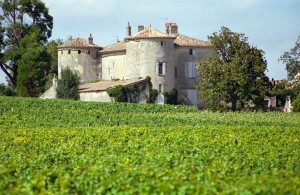 Finally it’s official. The wine belongs to the French cultural heritage.
Finally it’s official. The wine belongs to the French cultural heritage.
On July 9, the French wine industry had a reason to celebrate. On that day it was confirmed, finally, by the parliament that the French wine is a part of the French national heritage (le patrimoine français).
Maybe this confirmation came just in time. Right now there is a considerable debate in France about the famous Loi Evin, the law that restricts advertising and promotion of tobacco and alcoholic beverages in France. Many winemakers believe that those who interpret the law now has gone completely overboard in their zeal to limit advertising and what they consider to be advertising of wine.
Read more about wine, a national heritage vitisphere.com.
Our first book in English is about organic, biodynamic and sustainable viticulture
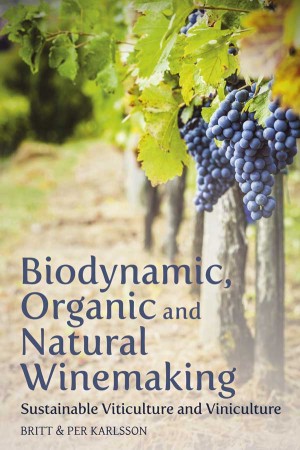 Our first book in English is soon to be published. The book is called “Biodynamic, organic and natural winemaking. Sustainable viticulture and viniculture.”
Our first book in English is soon to be published. The book is called “Biodynamic, organic and natural winemaking. Sustainable viticulture and viniculture.”
The book is published by Floris Books. It will probably be available by the end of September.
The purpose of the book is to explain what these different types of winemaking practices are about, organic, biodynamic, natural, sustainable etc. What is allowed? What is not allowed? How it works. What are the benefits and the drawbacks?
Read more about our book about organic and biodynamic winemaking on BKWine Magazine. You can already pre-order the book in online bookshops.
Bordeaux – classic wines, elegant city | A travel chronicle
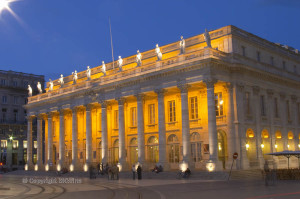 Bordeaux is one of France’s most elegant cities and Saint Emilion is one of the most picturesque. And the wine region of Bordeaux is of course a classic destination that all wine lovers must visit at least once. On a wine tour in Bordeaux you mix château visits with sightseeing, wine bars, restaurants and walks in the vineyard.
Bordeaux is one of France’s most elegant cities and Saint Emilion is one of the most picturesque. And the wine region of Bordeaux is of course a classic destination that all wine lovers must visit at least once. On a wine tour in Bordeaux you mix château visits with sightseeing, wine bars, restaurants and walks in the vineyard.
On BKWine’s Travel Blog Britt takes us on a tour of the Médoc, Saint Emilion and the region that lies between, Entre-deux-Mers.
If you then are tempted to explore Bordeaux yourself (we hope so!) then you can join us on one of our wine and food tours to Bordeaux. The September tour is already full but there will soon be new dates next year.
Uncorked: Good wines we have tasted recently, July 2014
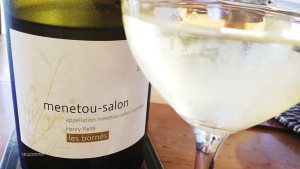 Uncorked: Under this heading we collect various wines that we have tasted, and liked, recently. We describe the wines just with a few short sentences, tasting notes that we hope will give you a short but accurate impression of what we thought of the wine, without delving into finer points tasting notes.
Uncorked: Under this heading we collect various wines that we have tasted, and liked, recently. We describe the wines just with a few short sentences, tasting notes that we hope will give you a short but accurate impression of what we thought of the wine, without delving into finer points tasting notes.
Some inspiration for more wine discoveries! As well as a perspective on what to expect from older wines.
This month: Some very, very good, and even exclusive wines, whites as well as reds. But also some very affordable ones. Young as well as old. For example: Chateau Pichon Lalande 1975, Macon-Chardonnay 2012 (yes, that’s the name), Lugana Ca Maiol Riserva 2011 (a little known but interesting Italian DOC), Jean Paul Brun’s Beaujolais blanc 1999, Leclerc-Briant’s rosé champagne and much more. Read more on BKWine Magazine: Uncorked: Good wines we have tasted recently, July 2014.
To irrigate or not to irrigate in the vineyard?
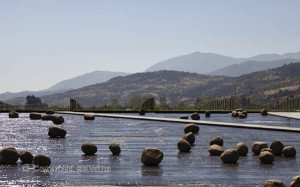 The summer started with a lot of rain in some parts of France. But in Languedoc-Roussillon it is getting dry. During a hot summer with hardly any rain, some vineyards will have problems, especially those with young vines. It was taboo in the old days in France to talk about irrigation. But times change. Now we see more and more drip irrigation in Southern France, especially for IGP wines (former vin de pays).
The summer started with a lot of rain in some parts of France. But in Languedoc-Roussillon it is getting dry. During a hot summer with hardly any rain, some vineyards will have problems, especially those with young vines. It was taboo in the old days in France to talk about irrigation. But times change. Now we see more and more drip irrigation in Southern France, especially for IGP wines (former vin de pays).
Good quality wines often come from vineyards with just the right amount of water supply, neither too much nor too little. The vine should not be spoiled; on the contrary, you want them to feel a little bit stressed. But not too much. Wine growers today know much more about water stress than they did a few years ago. If the vine gets too little water there is a risk that the ripening process simply stops. Irrigation may be a solution. Today 10 % of the Languedoc-Roussillon vineyard is irrigated. They also have irrigation to a small extent in the Southwest and in Provence. In the New World however, the figures are different. 83% of the surface under vine is irrigated. For Europe as a whole the figure is below 10 %.
In France, it is permitted to irrigate IGP wines from after the harvest and until August 15, or earlier if la véraison (when the grapes change colour) occurs earlier than this date. For AOC wines it is permitted only until June 15. But exceptions can be made.
The figures are from montpellier.inra.fr
Here you can see how irrigation is done: at midway down the page is a video that shows two types of irrigation in Mendoza vineyards (plus some nice landscapes).
Château de Beaucastel Vieilles Vignes blanc 1991, Châteauneuf-du-Pape | Britt’s Wine of the Month
This is a magnificent white wine, probably the best white in the entire Rhone Valley. A full-bodied wine made with the Roussanne grape. The nose is intense with aromas of beeswax, honey, ripe apricot. Full-bodied, rich, almost oily in the mouth. Very long finish. The wine has a great ageing potential and this 1991 is still, after 20 years, vibrantly fresh and even youthful.
Vieilles vignes indicates that the vines are old. These are Beaucastel’s oldest vines, between 80 and 100 years old. Part of the wine is aged in the tank and part in oak barrels. Production is tiny 500 cases per year.
Châteauneuf-du-Pape has a very small, exclusive production of white wines. Prices are high but also white wines from other appellations in the southern Rhone Valley, like Lirac or regular Cotes du Rhone, are worth of looking for. The grapes used are mainly Grenache Blanc, Clairette, Marsanne, Roussanne, Bourboulenc and Viognier.
A walk in the vineyard in Mendoza | A travel chronicle
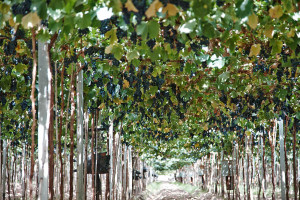 What is most important for the quality of a wine? Healthy, fine grapes would be the most common answer nowadays. And therefore we think it is important to get a look at the vineyard when visiting a winery. Not only the cellar with steel tanks, concrete tanks and oak barrels. No, a walk in the vineyard to get to know the work with the soil and the vines is vital.
What is most important for the quality of a wine? Healthy, fine grapes would be the most common answer nowadays. And therefore we think it is important to get a look at the vineyard when visiting a winery. Not only the cellar with steel tanks, concrete tanks and oak barrels. No, a walk in the vineyard to get to know the work with the soil and the vines is vital.
Britt has been walking in a lot of vineyards. On BKWine’s Travel Blog she tells the story about interesting things she learned walking in the vineyards in Mendoza in Argentina in February.
There will be a new wine and food tour to Argentina, and Chile, in February next year. It is soon time to book if you want to join us in exploring the South American vineyards.
A new sparkling wine – Crémant de Savoie
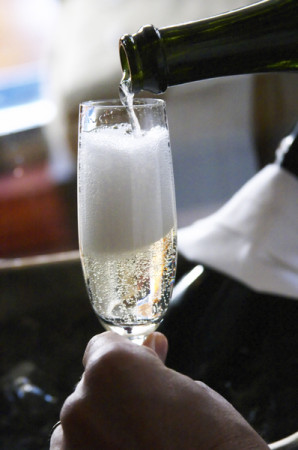 Crémant de Savoie is a brand new member of the Crémant-family. With Savoie this family now includes eight 8 different regions: Savoie, Alsace, Bordeaux, Burgundy, Die, Jura, Limoux and Loire.
Crémant de Savoie is a brand new member of the Crémant-family. With Savoie this family now includes eight 8 different regions: Savoie, Alsace, Bordeaux, Burgundy, Die, Jura, Limoux and Loire.
Crémant de Savoie will, at least initially, have a small production of 300 000 bottles per year. A drop in the ocean compared to for instance Crémant d’Alsace with its 30 million bottles.
The grapes for Crémant de Savoie need to be primarily (60 %) the two local grapes altesse and jacquère. As for all Crémant, it is made with a second fermentation in the bottle and must be aged for 12 months before it can be sold.
The best-sellers among the Crémant wines are Crémant d’Alsace, with sales of 30 million bottles a year and Crémant de Bourgogne with 17 million bottles. Both wines are sold mostly on the domestic market, exports account for only 18 and 26 % respectively.
Crémant wines have so far not been huge on the export market but Crémant de Bourgogne is well under-way thanks to big players like Cave de Lugny in Mâcon and Domaine Boisset with its renowned brand Louis Bouillot. And Crémant de Loire, with a production of 10 million bottles, actually export 50% of production. More on cremants.com
Revolution or evolution among winemakers in the Douro Valley? | A travel story
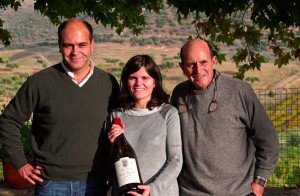 The Douro Valley, as in so many other places, there is a lot of talk about the new generation of winemakers. Per is sceptical; a region cannot change generations like that, all at once. But after meeting Oscar and Claudia Quevedo, Sandra Tavares and others, he starts to think that there is something to it after all. The new generation brings new blood and fresh thinking to a wine region. Often it is very positive.
The Douro Valley, as in so many other places, there is a lot of talk about the new generation of winemakers. Per is sceptical; a region cannot change generations like that, all at once. But after meeting Oscar and Claudia Quevedo, Sandra Tavares and others, he starts to think that there is something to it after all. The new generation brings new blood and fresh thinking to a wine region. Often it is very positive.
Read on BKWine’s Travel Blog about the new generation of winemakers in the Douro Valley.
If that makes you curious and interested to discover the wines and winemakers of the Douro Valley you can join us on a wine and food tour to the Douro Valley in October. A few places remain.
Lightweight bottles against climate change. Extra charge for over-weight to come
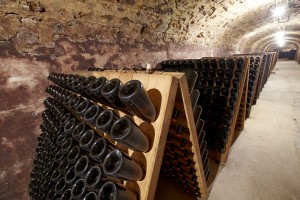 Have you tried lifting a box of 12 bottles of champagne? It’s heavy, I can tell you. Champagne bottles are heavy, but out of necessity. Too thin glass would not withstand the pressure in the bottle. But for still wines, how much need a bottle weigh?
Have you tried lifting a box of 12 bottles of champagne? It’s heavy, I can tell you. Champagne bottles are heavy, but out of necessity. Too thin glass would not withstand the pressure in the bottle. But for still wines, how much need a bottle weigh?
420 grams, says Systembolaget, the Swedish state monopoly for alcohol retail. Starting in two years’ time Systembolaget will charge their suppliers a fee for such bottles that weigh more. “Going over to lightweight bottles are an effective way to reduce climate change,” says Systembolaget in a press release.
Their inspiration for this heavy bottle fee is partly from the Canadian monopoly LCBO of Ontario.
I did a little weight check of the bottles we drank recently. No bottle passed the 420-gram limit. Closest was a Spanish wine with 452 grams, otherwise the Bordeaux, Languedoc and Rhône wines we’ve had during the last couple of weeks were all between 530 and 650 grams. No monster bottle was among these but we have experienced bottles of prestige cuvées as heavy as a champagne bottle. And those weigh between 835 and 900 gram. A heavy bottle means quality, many consumers tend to think. So it will probably be some time before all the bottles weigh 420 grams or less. But cheap volume wines should already be there. On the other hand, in Sweden almost all volume wines are sold in bag-in-box.
If the fee will be important for the wine importers selling to Systembolaget or not, remains to be seen. As an example, if a bottle weighs 500 grams the fee will be 0.40 SEK (approx. 0.04 euro) per bottle, if it weighs 800 grams, the fee will be 1.90 SEK (approx. 0.20 euro). And the fee applies, of course, only to still wines.
Mendoza – wine travel on a high level | A travel chronicle
A trip to the wine country of Mendoza is a fabulous experience. You will find large, spectacular wineries like Salentein with its art museum and smaller family-owned ones like Tempus Alba where they also do research work trying to find the best Malbec clone. The ambition is high everywhere. The meat is fantastic. The Andes mountains as a backdrop take your breath away.
No matter how much you want to stay on in Mendoza, a part of the experience is to take the bus across the Andes to the Chilean vineyards on the other side.
Per tells the story on BKWine’s Travel Blog about “high level” wine touring in Mendoza.
It is a quite unique experience to travel from Buenos Aires to Mendoza to Chile and visit the wineries in the wine regions. The next opportunity to do it will be on BKWine’s wine and food tour to Argentina and Chile in February next year.
Quinta do Noval 2012 Vintage Port
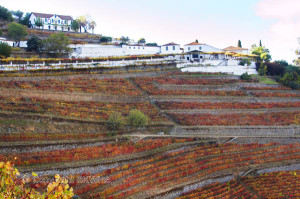 Quinta do Noval is one of the most famous port wine houses. Nowadays, it is owned by French insurance company AXA, which also owns several prestige châteaux in Bordeaux. A few days ago Quinta do Noval declared a new vintage, namely 2012. This year was not an obvious vintage for all port wine houses. But the director of Noval, Christian Seely, writes on his blog that he is “very happy with the result and convinced that the 2012 will hold a worthy place in the line-up of great recent declarations such as 2011, 2008 and 2007”.
Quinta do Noval is one of the most famous port wine houses. Nowadays, it is owned by French insurance company AXA, which also owns several prestige châteaux in Bordeaux. A few days ago Quinta do Noval declared a new vintage, namely 2012. This year was not an obvious vintage for all port wine houses. But the director of Noval, Christian Seely, writes on his blog that he is “very happy with the result and convinced that the 2012 will hold a worthy place in the line-up of great recent declarations such as 2011, 2008 and 2007”.
A vintage port is declared about 1 ½ years after the harvest if the port wine house believes that the year has been of sufficient intensity and quality. The wine is bottled after two years in barrels and then aged in the bottle. For many years, if you want.
Read more on what Christian Seely thinks about Quinta do Novals Vintage 2012.
What about tasting some of the magnificent posts from Quinta do Noval yourself? At the winery! Come with us on a wine tour to the Douro Valley! A few places left.
The grandiose and solemn Chapître Exceptionnel of the Confrérie du Vin de Cahors where 11 American sommeliers were dubbed knights
 Almost every wine region in France has its own “wine brotherhood”, confrérie de vin. Cahors, in the South-West is no different. The Confreries is mainly a fun thing that is used as an excuse to throw parties and to make friends with people.
Almost every wine region in France has its own “wine brotherhood”, confrérie de vin. Cahors, in the South-West is no different. The Confreries is mainly a fun thing that is used as an excuse to throw parties and to make friends with people.
At the 2014 edition of the Cahors Malbec Days there was a delegation of sommeliers from the USA who attended the week-long wine tasting event. The eleven sommeliers also had the honour of being admitted into the Brotherhood of Cahors wines, “enthroned” in the Confrérie du Vin de Cahors, on Monday 16 June 2014, at its extraordinary Chapitre Exceptionnel “Malbec Days”. You can see some spectacular pictures from the festivities as well as a video on BKWine Magazine: “Intronisation” in the Cahors Brotherhood, Cahors Malbec Days 2014.
Summer aperitif: sherry fino en rama
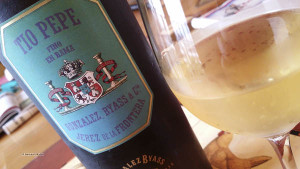 We just finished a bottle of Tio Pepe Fino En Rama from Gonzalez Byass. This is a powerful fino with intense flavours. The aromas are those of a typical fino, only so much more. Almond, green, fresh apples, some citrus. Lightly oxidized and a dry finish with a bit of saltiness. Extremely delicious.
We just finished a bottle of Tio Pepe Fino En Rama from Gonzalez Byass. This is a powerful fino with intense flavours. The aromas are those of a typical fino, only so much more. Almond, green, fresh apples, some citrus. Lightly oxidized and a dry finish with a bit of saltiness. Extremely delicious.
Fino is a dry sherry aged in barrels under a protective layer of yeast, called flor, a phenomenon that occurs naturally. The yeast protects the wine from too much contact with the air. A Fino en Rama comes from specially selected barrels and is bottled in April, just when the flor is at its thickest. The wine has not been filtered or clarified. The result is a fino with unusually intensive aromas.
This is the fifth consecutive year that Gonzalez Byass produces a Fino en Rama. The firm believes the wine should be consumed as fresh as possible and recommends that you drink it within 3 months after bottling. The En Rama we just finished was bottled on April 21 so we managed that exactly. But it you get hold of a bottle there is no danger. It will last for another few months without problems. When opened, store in the refrigerator and you can keep it for a couple weeks.
Tio Pepe Fino En Rama is produced in limited quantities. If you can’t find it you are sure to find the normal Tio Pepe Fino. A good alternative. Or any other fino; most are excellent value for money. And remember, fino is not only for the summer months.
Dramatic stories from the Cape Wine Lands | A travel story
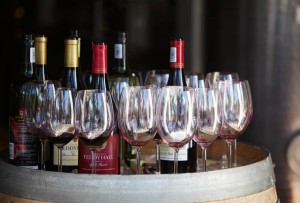 The interesting thing about going to a wine region is not only the good wines and the good food. It is also the many personalities you get to meet and the stories they tell you. Teddy Hall is a wine producer in Stellenbosch in South Africa. He is a very talented winemaker (one of many). He is also a fantastic storyteller.
The interesting thing about going to a wine region is not only the good wines and the good food. It is also the many personalities you get to meet and the stories they tell you. Teddy Hall is a wine producer in Stellenbosch in South Africa. He is a very talented winemaker (one of many). He is also a fantastic storyteller.
Here you can read some horrendous stories about the old times in the Cape. We heard them from Teddy of course, walking with him in the historic old town of Stellenbosch. Read Per’s story on the BKWine Travel Blog on a keel-hauling, a night-time transport to the morgue, elephants and also excellent wines in South Africa of course.
South Africa is a well-known name today in wine but not everyone is aware of that they make outstanding world-class wines, if you know where to look. Join us at BKWine on next year’s wine and food tour to South Africa. We promise to show you where to find the best!
The world’s top spirit is … quite unknown
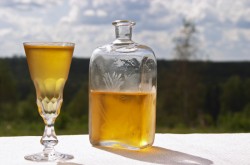 One tends to have a very local view of what is big and what is famous and successful. World famous in one’s own back-yard so to speak. The world’s biggest selling spirit brand is not Smirnoff (in 4th place), nor Absolut Vodka (not even on the list, sorry to disappoint the Swedes; and the French), nor Johnnie Walker (#8). The biggest seller is called Jinro Soju, of the category shochu (or soju). It is immensely popular in Korea. It sells far more than double compared to Smirnoff.
One tends to have a very local view of what is big and what is famous and successful. World famous in one’s own back-yard so to speak. The world’s biggest selling spirit brand is not Smirnoff (in 4th place), nor Absolut Vodka (not even on the list, sorry to disappoint the Swedes; and the French), nor Johnnie Walker (#8). The biggest seller is called Jinro Soju, of the category shochu (or soju). It is immensely popular in Korea. It sells far more than double compared to Smirnoff.
I can almost bet that you cannot guess which spirits are in second and third place. You can see the full top-ten list of the world’s biggest selling spirits, including sales volumes, on BKWine Magazine. Then you can have your own trivial pursuit quiz when you’re in the bar.
What’s in a name? Ask the Swedish wine importers!
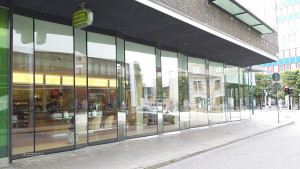 Some of the major Swedish wine importers have several subsidiaries and sister companies. Is there any particular reason for this? Does it provide advantages in responding the Systembolaget’s tenders? Corporate structures can sometimes turn out to be quite strange. Not least in the wine industry.
Some of the major Swedish wine importers have several subsidiaries and sister companies. Is there any particular reason for this? Does it provide advantages in responding the Systembolaget’s tenders? Corporate structures can sometimes turn out to be quite strange. Not least in the wine industry.
Per speculates on BKWine Magazine what the reasons may be for some wine importers to hide behind multiple names.
Terrasses du Larzac is a new AOP in Languedoc
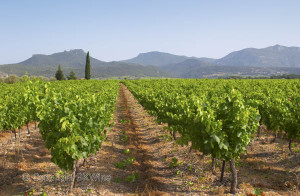 Languedoc has a new appellation since a few weeks back, AOP Terrasses du Larzac. It is a region located north-west of Montpellier. Among the around 60 independent producers here you will find some of the best in Languedoc. Some are located in or around the charming town of Montpeyroux. The soil in Terrasses du Larzac is calcareous and cool breezes from the mountains provide coolness during the hot summer months.
Languedoc has a new appellation since a few weeks back, AOP Terrasses du Larzac. It is a region located north-west of Montpellier. Among the around 60 independent producers here you will find some of the best in Languedoc. Some are located in or around the charming town of Montpeyroux. The soil in Terrasses du Larzac is calcareous and cool breezes from the mountains provide coolness during the hot summer months.
Previously, Terrasses du Larzac was a sub-appellation of the Languedoc. Thus the label stated Languedoc – Terrasses du Larzac. To have their own appellation is for the producers a quality recognition and something they are proud of. On the other hand, Terrasses du Larzac is an unknown name in the world while Languedoc has finally started to become known as a quality region. Read more on BKWine Magazine about the Terrasses du Larzac and about the pros and cons of getting a separate appellation.
Shafer Vineyards, the full story from the beginning to the glass
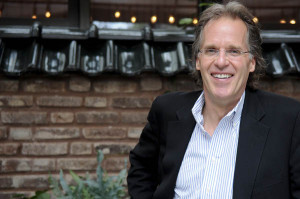 Shafer Vineyards is located in the famous district of Stags Leap in Napa Valley. The estate was founded by John Shafer and his son Doug started working with him in 1984. It may not sound so dramatic, but there are many exciting tales to tell about the family Shafer.
Shafer Vineyards is located in the famous district of Stags Leap in Napa Valley. The estate was founded by John Shafer and his son Doug started working with him in 1984. It may not sound so dramatic, but there are many exciting tales to tell about the family Shafer.
BKWine’s reporter Ulf Bengtsson met Doug Shafer over a lunch in Stockholm and heard all about the move from Chicago, about perfection in the wine cellar, how the movie Sideways killed Merlot sales (and what Doug really thinks of pinot noir and merlot), and much more. Summer reading on BKWine Magazine on Shafer Vineyards in five parts.
Discover sherry, a unique wine
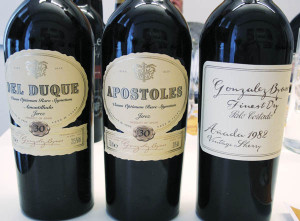 With today’s technology you can taste Sherry in Stockholm with Master Blender Antonio Flores from Gonzalez Byass still in Jerez in Andalusia.
With today’s technology you can taste Sherry in Stockholm with Master Blender Antonio Flores from Gonzalez Byass still in Jerez in Andalusia.
BKWine Roland Eriksson reports on BKWine Magazine from a fantastic tasting for all Sherry lovers organized by Gonzalez-Byass.
Maybe an inspiration for those who have not yet discovered this fabulous wine? Sherry is so many different things. The dry sherry, like fino and amontillado, is a superb wine for aperitif or tapas. Sweet sherry can be so sweet that it is a dessert in itself. And there is much in between. Sherry is a unique wine.
Wine videos and other videos with your smart-phone and tablet computer
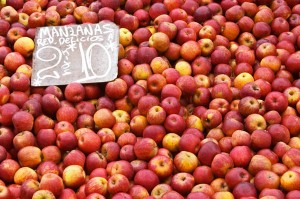 If ever you have recorded video with your smart phone perhaps you have hit your head on the same question as I. What “app” should I use to edit videos on your tablet computer?
If ever you have recorded video with your smart phone perhaps you have hit your head on the same question as I. What “app” should I use to edit videos on your tablet computer?
Early this year I started to use my smartphone to shoot video. I also thought it would be convenient to use a tablet to do the editing, especially when travelling. (Back home I use Sony Vegas to edit my videos.) But it turned out to be quite a challenge to find a decent Android video editing application. In the Apple world there are a few choices for decent video editing on an iPad. But they only exist on iOS, not on Android, and I don’t want to use Apple equipment. I started the hunt. Read more on BKWine’s Photography Blog: Trying out Android video editing apps.
Wine events calendar
Send us an email if you have some event you want on the calendar.
Don’t be an egoist! Share with your friends and other wine enthusiasts! Forward the Brief to your friends! Suggest that they sign up for a free subscription !
© Copyright BKWine






